Sussex Chicken: The Sweetest Backyard Bird
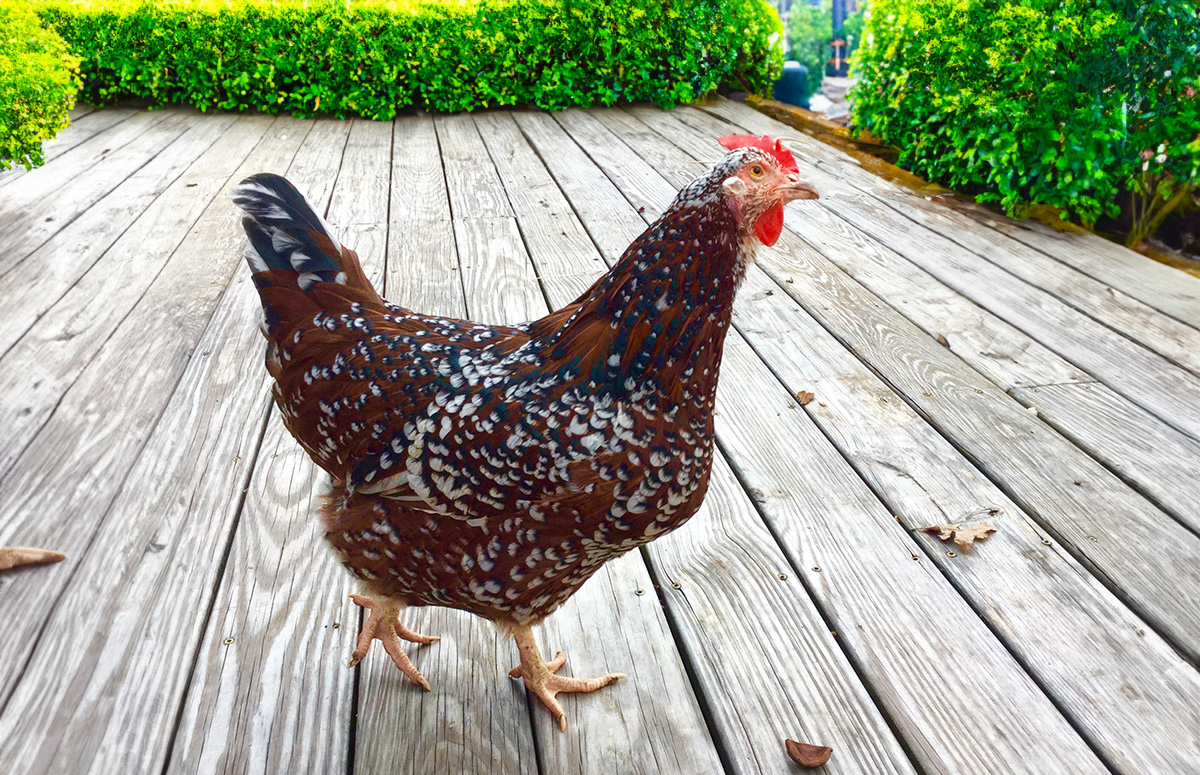
Sussex chickens are very popular as a dual-purpose breed, meaning they can be kept for both meat and eggs. They’re large birds, and some have a very appealing color pattern, like the Speckled Sussex chicken.
Sussex birds are extremely friendly and kind, which makes them suitable backyard pets for children. Let’s find out all there is to know about this beginner-friendly breed.
- Sussex hens lay up to 250 eggs per year
- British dual-purpose breed
- Characterized by a large, broad body
- Can go broody occasionally
- Cold-hardy, don’t stand heat well
| Eggs | 250 eggs per year |
| Egg Color | Tinted to brown |
| Egg Size | Large |
| Weight | 8 – 9 lbs |
| Hardiness | Cold |
| Temperament | Friendly |
| Beginner-friendly | Yes |
| Color | Eight recognized colors |
Characteristics
Sussex chickens are quite large chickens, as they are bred as egg and meat birds. They have a broad, large body, wide shoulders, and a rectangular build. This breed quickly gains weight and fattens up, which makes it an excellent meat bird. They’re good egg layers, too, but they lay best when not overly fattened.
Sussex’ have eight recognized color varieties by the British Poultry Club, whereas speckled is the oldest and the most popular. The other colors are brown, buff, coronation, light, red, silver, and white. In the U.S., only three color varieties are recognized: speckled, light, and red.
The Speckled Sussex is the most popular color variety in Sussex chickens. Due to their unique feathering pattern, with white tips on each feather, it almost looks like a camouflage suit. The base color is dark mahogany and gets more vibrant after each molt.
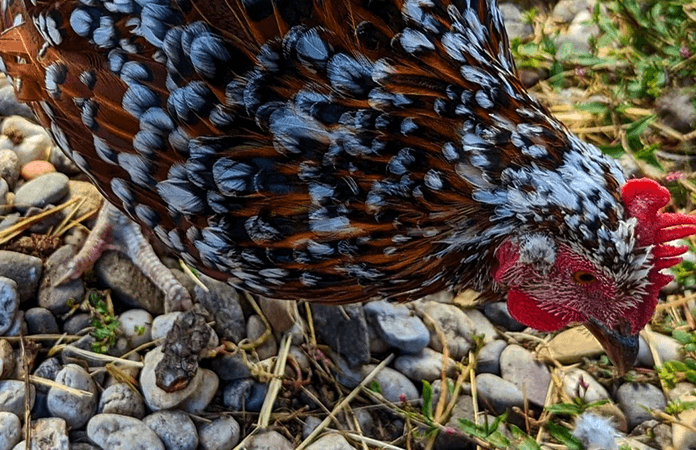
This graceful breed has a red single comb, earlobes and wattles are red. Their legs are unfeathered, and their skin is white. Roosters weigh up to 9 pounds (4kg), and hens around 8 pounds (3,5kg), making them quite large chickens. There is also a smaller, Bantam version available of the Sussex chicken, weighing around 36 oz (1kg) for hens and 55oz (1,5kg) for roosters.
The Sussex Breed
The Sussex breed finds its origin in, who could have guessed, Sussex, Southeast England. It’s believed, however, that the Romans imported the breed in 43 A.D. during the Roman invasion of Britain.
The Sussex region was known as a poultry center with a reputation for excellent-tasting meat birds with excellent table qualities. During the Victorian Era, in the second half of the 19th century, chicken keeping became very popular, and chicken ownership spiked. New poultry keepers were found everywhere in the world, and the Sussex chicken kept its popularity well into the first half of the 20th century. Together with the Rhode Island Red, the Sussex was the most important meat bird in England but was also loved because of its egg-laying skills.
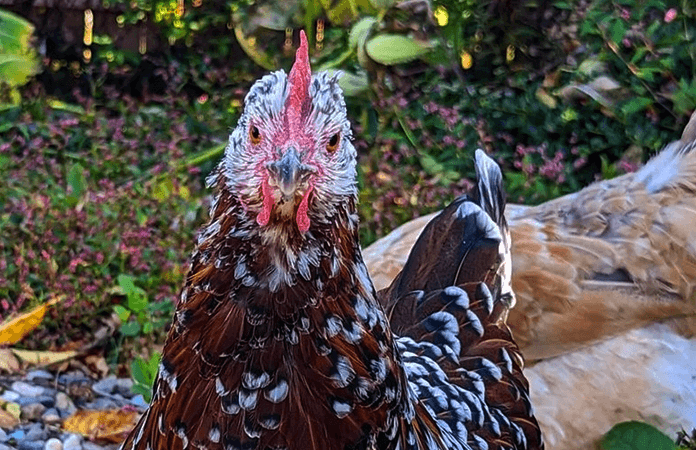
In 1845 the breed as we know it today was first shown at a London poultry show. Sussex chickens were enthusiastically bred with Oriental fowl to increase their size and hardiness. But without success, the ‘new’ breed had less tender meat. This made the true Sussex breed almost die out, but fortunately, a group of poultry enthusiasts formed a club to rescue it from extinction. Their breeding process makes the bird we know today as the Sussex chicken.
Egg Production
Sussex chickens are mainly known for their tender meat, but they’re also excellent egg layers. Hens lay up to 250 eggs per year, that’s up to 5 eggs per week. All eggs are tinted to brown in color and large in size. And as Sussex chickens are cold-hardy, they’ll keep on laying during winter, although egg production can temporarily slow down.
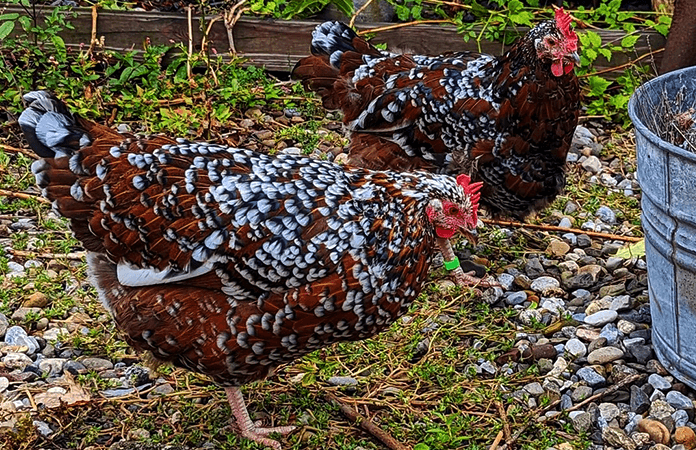
Because the Sussex is also a meat bird, they gain weight fast and quickly fatten. But if you’re planning to keep a Sussex primarily for its egg-laying skills, it’s better not to let them gain too much weight. They lay better if not fattened up.
The Sussex hens can get broody occasionally; they make excellent mothers. This can be important when you’re planning to hatch eggs, but know that egg production temporarily stops during broodiness.
Personality
Sussex chickens are low maintenance and need no special care besides water, food, and shelter. Therefore, they are a beginner-friendly breed suitable for those with little experience in poultry keeping.
They’re also very friendly and kind birds, so you can easily keep them when having small children running around. Sussex, although a bigger breed, makes an excellent pet chicken.
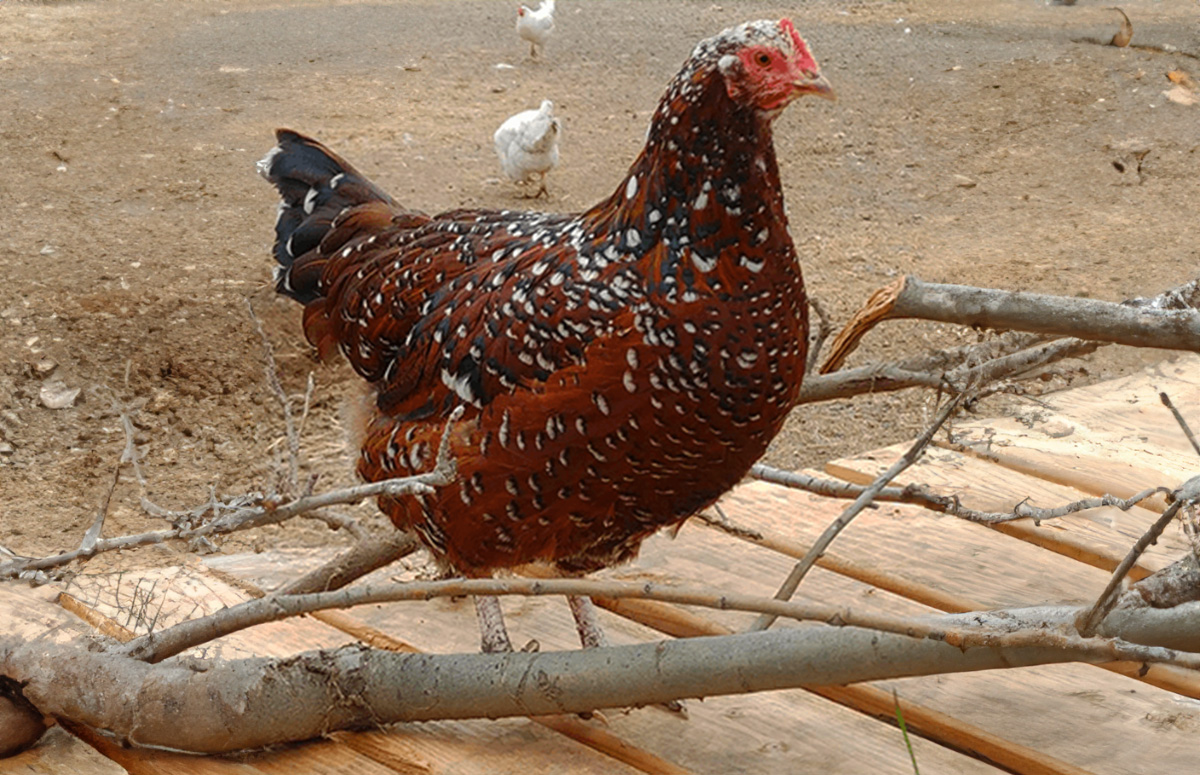
They’re overall a healthy breed that’s hardy and sturdy. They do, however, cope with low temperatures better than heat. When living in a tropical environment, the Sussex chicken is not the best breed for you. But keep in mind that all chickens need extra care during extremely hot and cold weather.
Better breeds to keep in hot climates are Polish, Campines, Easter Eggers, or Leghorns.
They’re fine in confinement, but make sure to meet minimum space requirements. Sussex chickens also like to free-range, so you’ll make them extra happy by giving them the space to forage. They love the company of humans and are curious birds; they especially love the attention you give them when doing some chores in the backyard.
You can mix the Sussex with any chicken breed, but be aware they’ll probably be low in the pecking order. This may surprise you as they are pretty large, but Sussex chickens are not dominant or assertive.
They mix great with other large but friendly birds, such as an Orpington. They’ll probably be fine when keeping them with dominant chickens like Rhode Island Reds, but keep an eye on them the first weeks.
Summary
Sussex chickens are an old English breed originating in Sussex. They’re a great addition to any backyard flock due to their great egg production (up to 250 eggs yearly!) and tender meat.
The breed is very beginner-friendly, low in maintenance, and amiable and curious toward humans. They will be lower in the pecking order, so it’s best to keep an eye on them when mixing the Sussex with other breeds.
To learn more about chicken breeds, check out our ‘Chicken Breeds Page‘ to see every specific breed we address. Or go to our listicle breed summary on ‘The Classroom‘, or, if you’re unsure where to start, take a look at our ‘Chicken Breeds: Ultimate Beginners Guide‘.
Credits featured image: @friendlyflockfarm (IG)






















